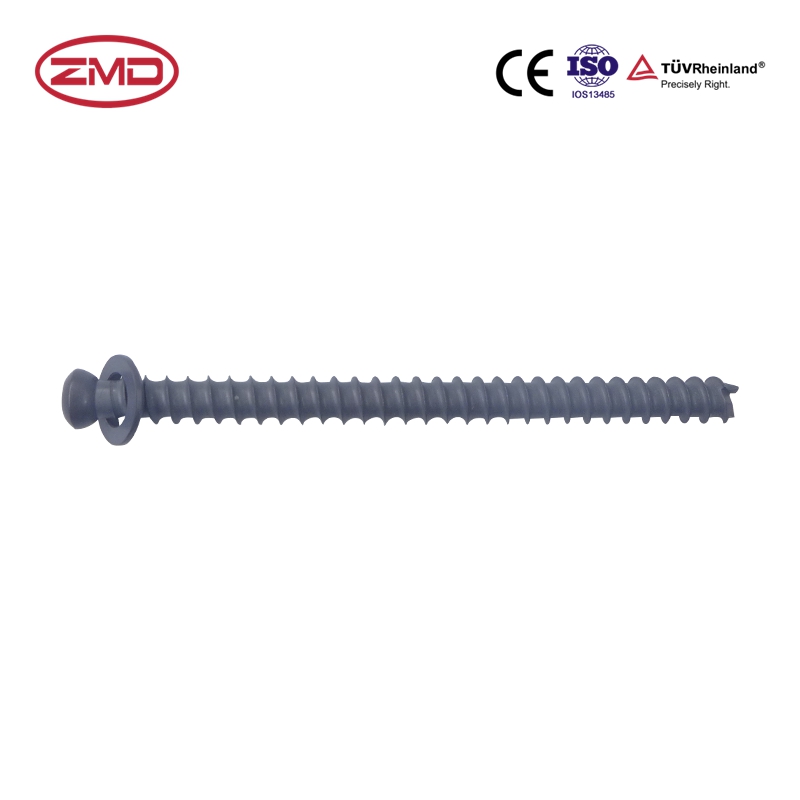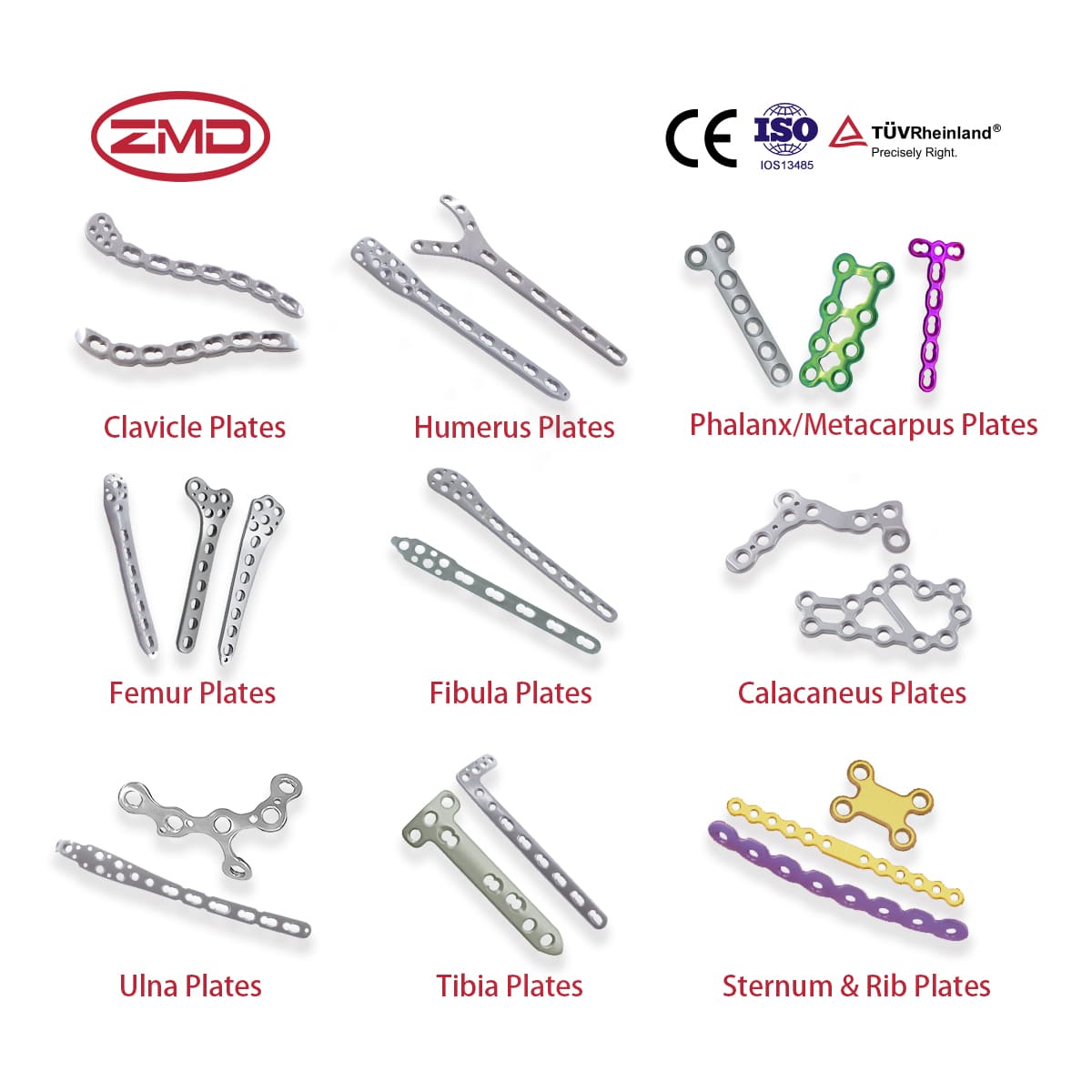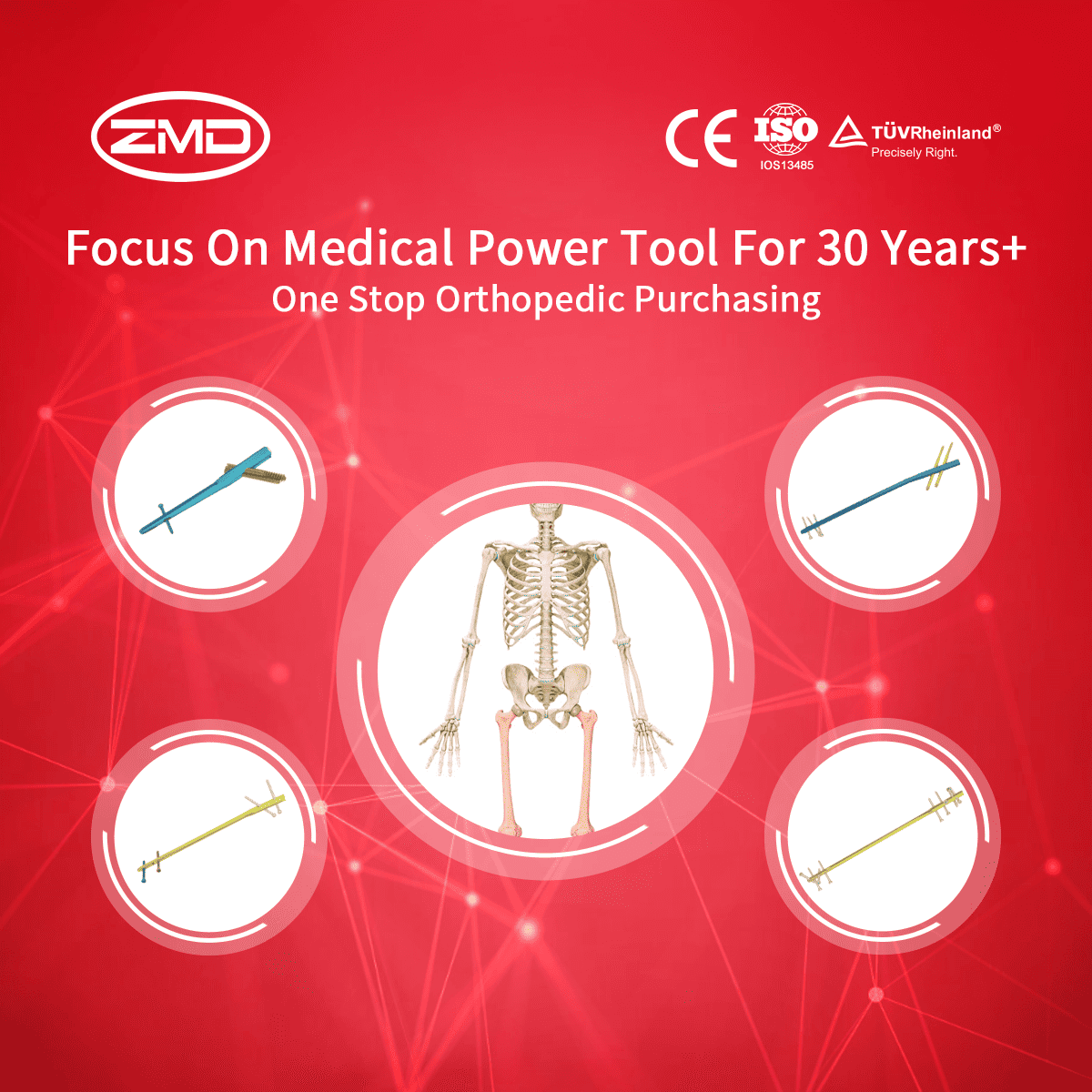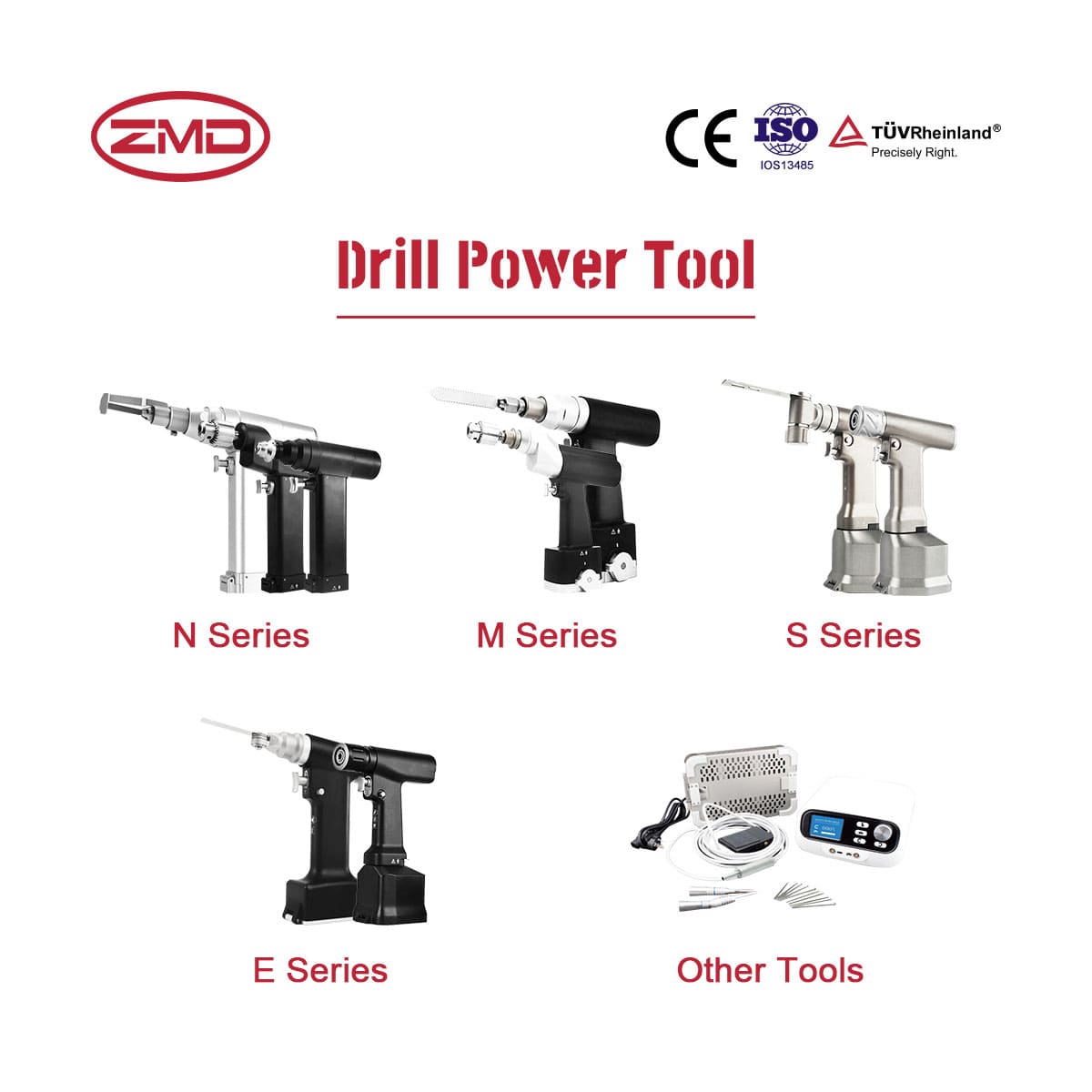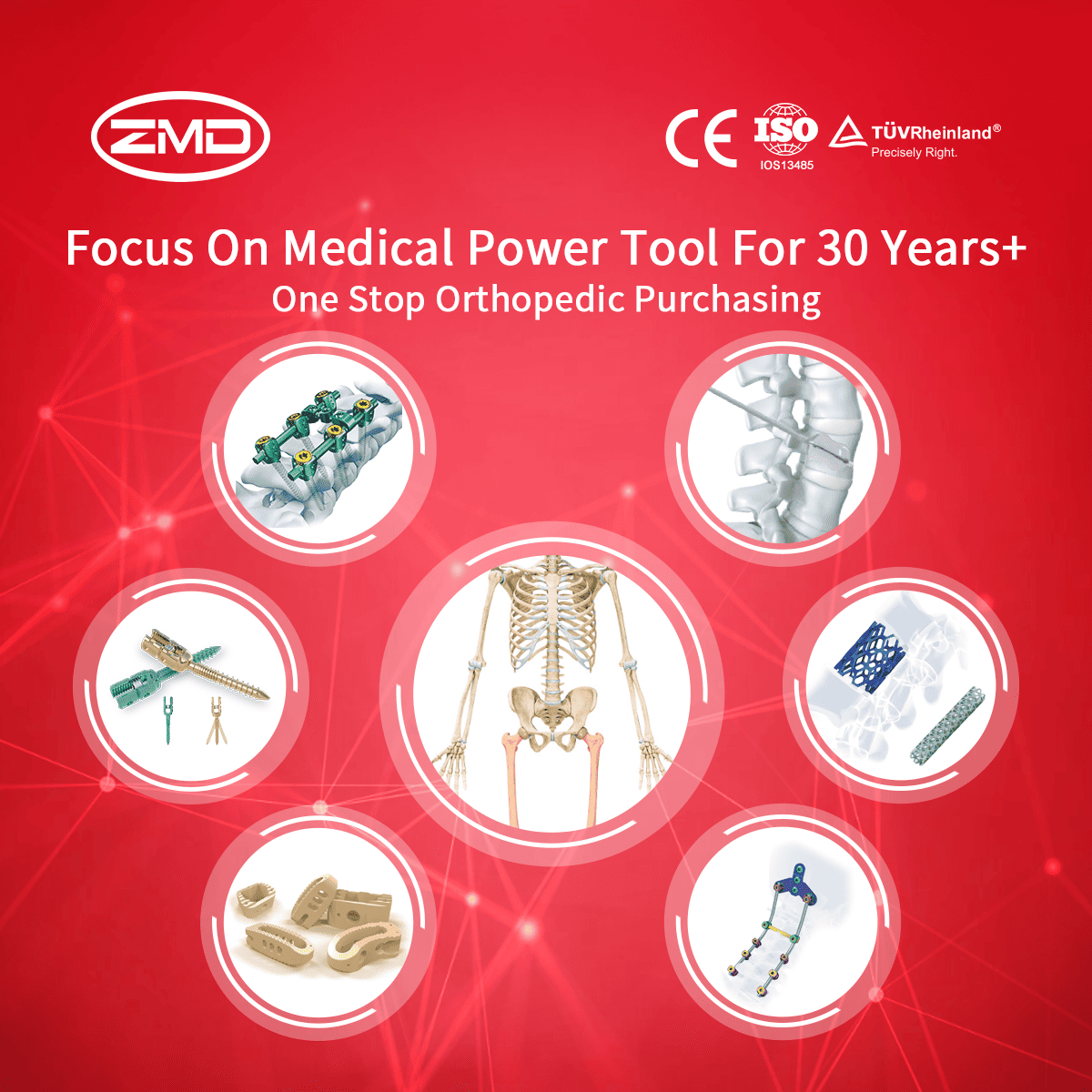Normal Cannulated Screw
ZMD
Orthopedic Products
Haven't been able to locate the product you're searching for yet?
If you're interested in more orthopaedic implant products, feel free to get in touch with our ZMD consultants.
What is a Normal Cannulated Screw?
A normal cannulated screw is a vital and specialized medical implant predominantly utilized within the realm of orthopedic surgery, although its applications extend to other relevant surgical fields as well.

Structural Features
- Hollow Central Shaft: In contrast to the conventional solid screws, the normal cannulated screw features a hollow core that traverses its entire length. This unique design innovation is a game-changer in surgical procedures. By permitting surgeons to insert the screw over a guidewire, it streamlines the placement process. The guidewire acts as a precise navigational aid, leading the screw to the exact location within the bone where it’s needed most. This not only enhances the accuracy of screw placement but also cuts down on the extensive drilling that would otherwise be required, reducing the overall surgical time and potential damage to surrounding tissues.
- Standard Thread Design: These screws are equipped with a typical thread pattern. While the specific design may be tweaked according to the particular application at hand, the overarching goal is to ensure a firm grip within the bone tissue. The threads effectively “bite” into the bone, providing reliable holding power that keeps the screw firmly in place and stabilizes the bone fragments it’s meant to secure.
Key Benefits
- Improved Accuracy: The utilization of a guidewire as a placement guide is a significant advantage. In complex anatomical regions, such as around joints or in areas with intricate bone structures, achieving pinpoint accuracy is crucial. The guidewire enables surgeons to navigate through these challenging terrains and position the screw with a level of precision that’s essential for successful surgical outcomes.
- Minimally Invasive: Thanks to the hollow central shaft, smaller drill holes are sufficient for screw insertion. This reduction in the size of the surgical access point translates to less trauma to the surrounding soft tissues. Patients experience less pain, have a lower risk of post-operative infections, and enjoy a faster recovery period, getting back to their normal lives sooner.
- Versatility: Available in a diverse array of sizes and thread configurations, normal cannulated screws can be tailored to fit a wide variety of fracture types and bone applications. Whether it’s a small fracture in the hand or a more significant break in a limb bone, there’s likely a suitable cannulated screw option to address the situation effectively.
- Cost-Effective: When compared to some highly specialized cannulated screws on the market, normal cannulated screws strike a balance between functionality and cost. They offer reliable performance in many common surgical scenarios without breaking the bank, making them a popular choice among surgeons looking for a practical and affordable solution.

How Does a Normal Cannulated Screw Work?
A normal cannulated screw is a key medical implant in orthopedics, used for fixing broken bones. It’s designed to be inserted into bone, providing stability that promotes healing of fractures.
- Accurate Placement: Thanks to the guidewire, the screw lands exactly where it should, minimizing the odds of harming nearby tissues.
- Minimally Invasive: The need for only small incisions means patients experience less pain post-surgery and can look forward to a swifter return to their regular routines.
- Versatility: Whether it’s fixing fractures, realigning bones in osteotomies, or fusing joints during arthrodesis, cannulated screws prove useful across a range of orthopedic procedures.
- Strength and Stability: The screw’s threads lock in tight, offering robust support to hold broken bones steady, which is vital for proper healing.
Blog
International Women’s Day: Salute to the “She – Power” at ZMD
International Women’s Day: Salute to the “She – Power” at ZMD Amid the trends of “Intelligent Medical Devices” and “Minimally Invasive Medical Technologies”, ZMD thrives
Discover Innovation with Sunan Medical at AAOS
Discover Innovation with Sunan Medical at AAOS The American Academy of Orthopaedic Surgeons (AAOS) Annual Meeting is the premier event for orthopedic professionals worldwide, offering
Visit Us at Expomed Eurasia 2025: Discover Sunan Medical’s Innovations
Visit Us at Expomed Eurasia 2025: Discover Sunan Medical’s Innovations The 32nd Expomed Eurasia, taking place from April 24-26, 2025, at the Tüyap Exhibition and

